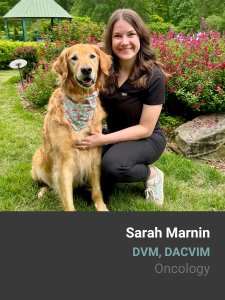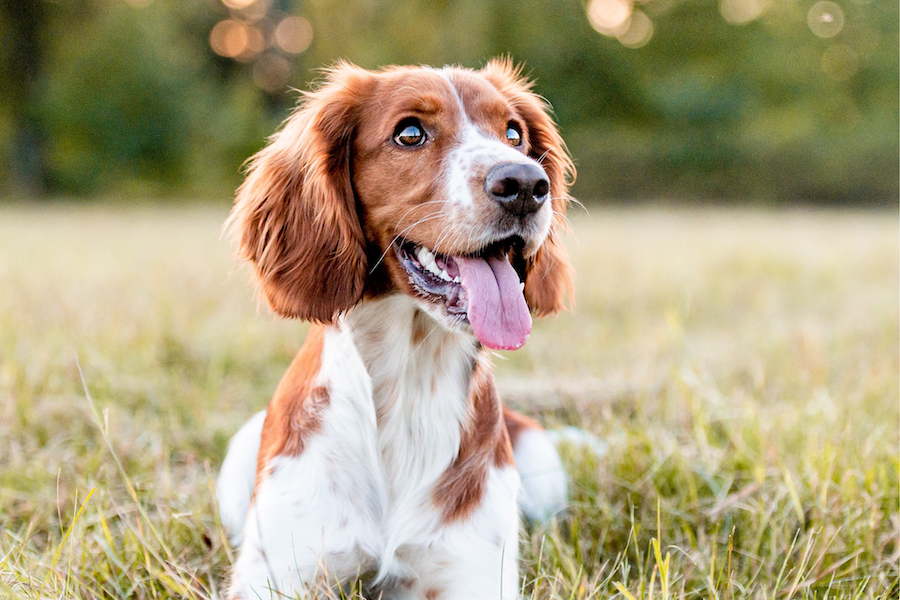Additional testing recommendations and treatment options will be presented in an informative and supportive environment. We will discuss everything compassionately and without judgement to ensure you feel informed and comfortable with your pet’s plan prior to moving forward. A typical consultation appointment lasts anywhere from 1-2 hours. Depending on the tumor type, additional tests needed, and treatment path selected, the visit may be extended for the full day. This will be discussed during the consultation but you may want to allow additional time in your schedule.
NRVS Oncology Services
- In-house laboratory
- Tumor sampling (needle aspirate, punch biopsy)
- Bone marrow aspiration or biopsy
- Diagnostic imaging (radiographs, ultrasound, CT, MRI)
- Chemotherapy (intravenous, subcutaneous, oral)
- ONCEPT canine melanoma vaccine
- Palliative and end-of-life care
FAQ
What is chemotherapy?
Chemotherapy is drug therapy designed to kill or slow the growth of cancers. Many of the drugs used to treat cancer are derived from natural substances such as plants, trees, or even bacteria. These are often the same drugs used in human medicine, but there are chemotherapies that are specific to veterinary patients.
How is chemotherapy administered?
Administration of chemotherapy is dependent on the particular chemotherapy drug. Some are only available as an injection, whereas others are available only in pill form.
Intravenous (IV) drugs: An IV catheter is placed for safe administration of the drug. After the drug is given the catheter is removed and a light bandage is applied. The bandage may be removed 1-2 hours after the drug is administered.
If your pet licks the injection site longer than a day or if the site turns red or bruised, please contact us or your family veterinarian immediately.
Oral drugs: These are usually administered by the owner at home but can be administered in the hospital. It is important that your pet receives all medication as prescribed, and the pills are not crushed or split. Drugs in capsule form must never be opened.
To administer the chemotherapy pill, it is helpful to use pill pockets you can purchase at any pet supply store. Or you may wish to coat the pills with peanut butter or cream cheese to mask the bitter taste of the medicine. If you are administering an oral chemotherapeutic drug, you MUST wear nitrile gloves when handling pills. After treatment, remove the gloves and wash hands with soap and water.
How should I handle my pet’s waste when they are on chemotherapy?
Your pet’s regular urinations and defecations can be disposed of/handled as normal, but if there is an “accident” in the house or car, wear gloves and clean the area with disposable items (paper towels, etc.), wrap in a separate plastic bag, tie off and then dispose in the trash. Wash your hands thoroughly following cleaning. For soiled clothing or bedding, these should be washed twice in hot water, ideally with bleach.
What side effects should I expect during chemotherapy treatment?
In veterinary oncology we use relatively lower doses of chemotherapy compared to human oncology, so the rate of side effects is much lower in our patients.
-
- About 20% of animal patients have side effects to chemotherapy.
- Only about 5% will have severe side effects that could potentially result in hospitalization.
- About 15% will have side effects that are mild enough that you could treat at home with oral medications. These medications include anti-nausea medications, anti-diarrheal medications, appetite stimulants, and antibiotics. What your pet may need depends on the symptoms and how significant they are, but often we will send you home with these medications to have on hand, in the event they are needed.
NRVS Oncology Services
-
- In-house laboratory
- Tumor sampling (needle aspirate, punch biopsy)
- Bone marrow aspiration or biopsy
- Diagnostic imaging (radiographs, ultrasound, CT, MRI)
- Chemotherapy (intravenous, subcutaneous, oral)
- ONCEPT canine melanoma vaccine
- Palliative and end-of-life care
FAQ
What is chemotherapy?
Chemotherapy is drug therapy designed to kill or slow the growth of cancers. Many of the drugs used to treat cancer are derived from natural substances such as plants, trees, or even bacteria. These are often the same drugs used in human medicine, but there are chemotherapies that are specific to veterinary patients.
How is chemotherapy administered?
Administration of chemotherapy is dependent on the particular chemotherapy drug. Some are only available as an injection, whereas others are available only in pill form.
Intravenous (IV) drugs: An IV catheter is placed for safe administration of the drug. After the drug is given the catheter is removed and a light bandage is applied. The bandage may be removed 1-2 hours after the drug is administered.
If your pet licks the injection site longer than a day or if the site turns red or bruised, please contact us or your family veterinarian immediately.
Oral drugs: These are usually administered by the owner at home but can be administered in the hospital. It is important that your pet receives all medication as prescribed, and the pills are not crushed or split. Drugs in capsule form must never be opened.
To administer the chemotherapy pill, it is helpful to use pill pockets you can purchase at any pet supply store. Or you may wish to coat the pills with peanut butter or cream cheese to mask the bitter taste of the medicine. If you are administering an oral chemotherapeutic drug, you MUST wear nitrile gloves when handling pills. After treatment, remove the gloves and wash hands with soap and water.
How should I handle my pet’s waste when they are on chemotherapy?
Your pet’s regular urinations and defecations can be disposed of/handled as normal, but if there is an “accident” in the house or car, wear gloves and clean the area with disposable items (paper towels, etc.), wrap in a separate plastic bag, tie off and then dispose in the trash. Wash your hands thoroughly following cleaning. For soiled clothing or bedding, these should be washed twice in hot water, ideally with bleach.
What side effects should I expect during chemotherapy treatment?
In veterinary oncology we use relatively lower doses of chemotherapy compared to human oncology, so the rate of side effects is much lower in our patients.
-
- About 20% of animal patients have side effects to chemotherapy.
- Only about 5% will have severe side effects that could potentially result in hospitalization.
- About 15% will have side effects that are mild enough that you could treat at home with oral medications. These medications include anti-nausea medications, anti-diarrheal medications, appetite stimulants, and antibiotics. What your pet may need depends on the symptoms and how significant they are, but often we will send you home with these medications to have on hand, in the event they are needed.





